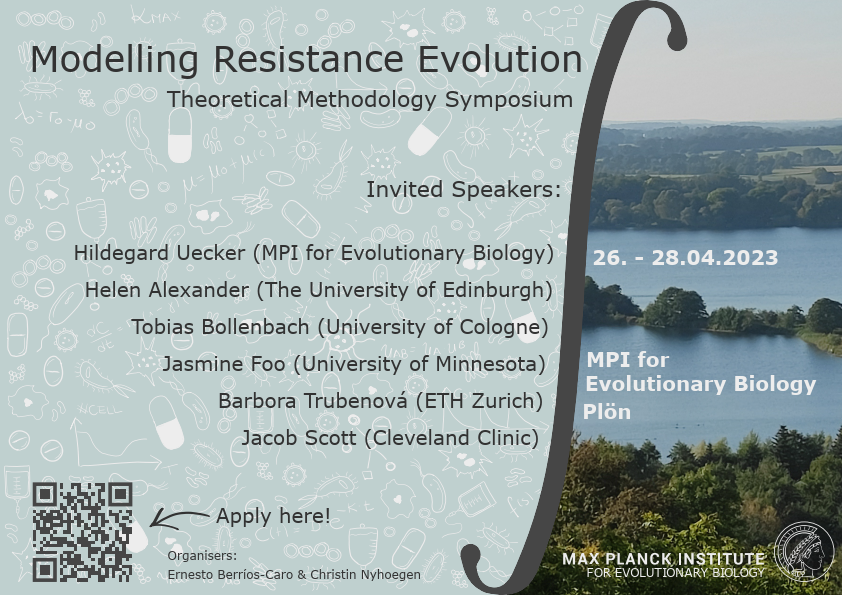Speaker
Description
Evolution in changing environments is still poorly understood. We analyze a recently introduced and empirically well-grounded model for antibiotic resistance evolution in bacteria [1]. In this model the corresponding fitness landscape changes with the antibiotic concentration, thereby giving rise to tradeoffs between adaptation to low and high antibiotic concentrations. We show that the adaptive evolution under slowly changing antibiotic concentration exhibits hysteresis loops and memory formation: the selection of a fit genotype not only depends on the current concentration of the antibiotic, but also on the history of concentration changes. Our method of analysis borrows ideas and techniques that were developed for the study of the dynamics driven disordered condensed-matter systems [3]. [1] Suman G. Das, Susana O. L. Direito, Bartlomiej Waclaw, Rosalind J. Allen, Joachim Krug, "Predictable properties of fitness landscapes induced by adaptational tradeoffs," eLife 9 (2020) e55155. [2] Suman G. Das, Joachim Krug, and Muhittin Mungan, "Driven Disordered Systems Approach to Biological Evolution in Changing Environments," Phys. Rev. X 12 (2022) 031040. [3] M. Mungan, "Putting Memories on Paper," PNAS 119 (2022) e2208743119.

